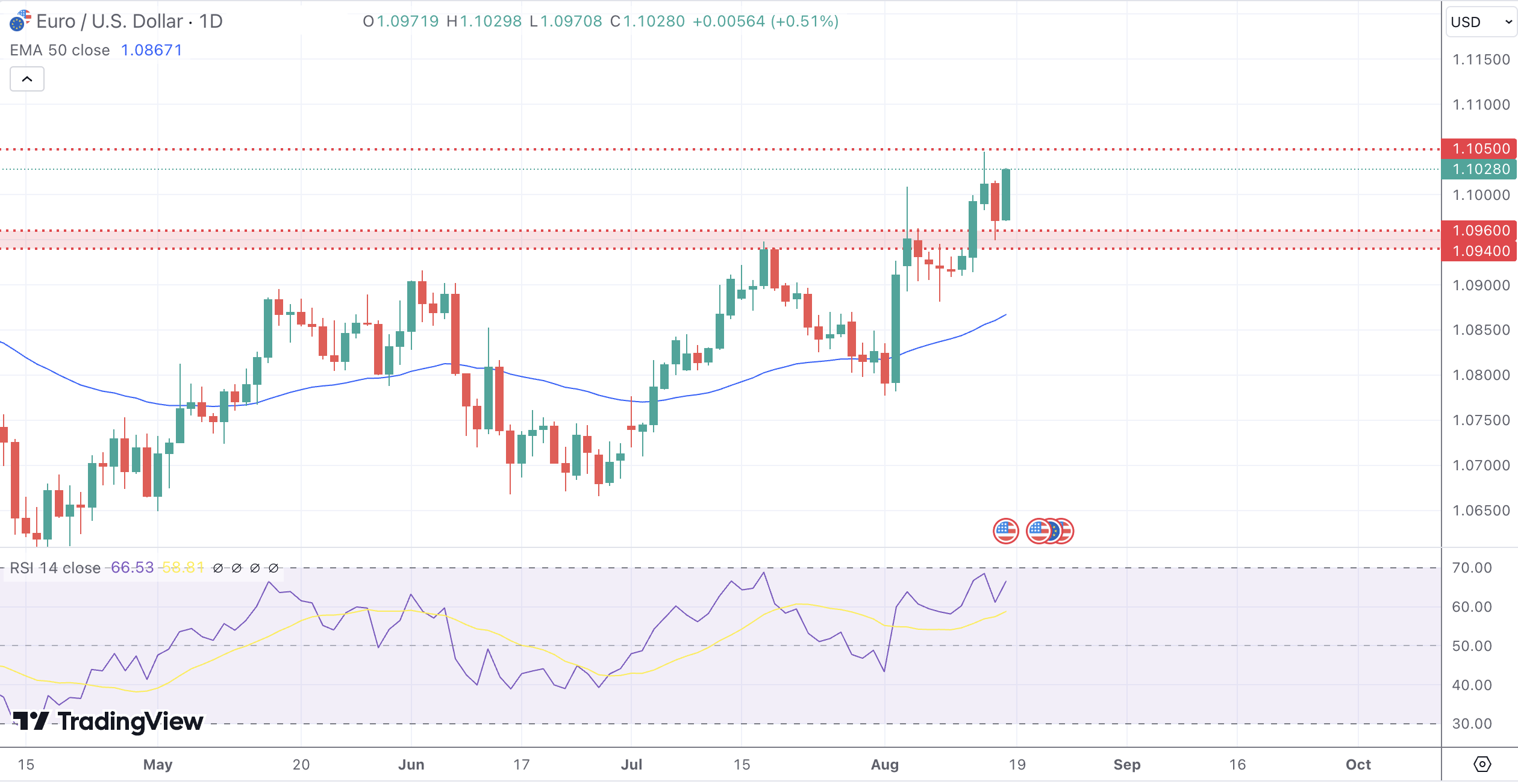Key Takeaways
- EUR/USD is trading near its year-to-date highs around 1.1050, driven by a weakening US Dollar and positive Eurozone economic data.
- Immediate resistance levels are at 1.1000 and 1.1050-1.1060, with support at 1.0960, 1.0940, and 1.0900.
- The Relative Strength Index (RSI) suggests potential for continued bullish momentum, though sellers are cautious.
- Upcoming FOMC minutes and Eurozone growth data will be critical in determining the pair’s direction.
- The Euro’s strength could continue if the Fed maintains a dovish tone, but stronger-than-expected US data could limit gains.
Market Dynamics and Recent Performance
The EUR/USD pair has shown significant resilience over the past week, trading near its year-to-date highs around 1.1050. This strength is largely attributed to a weakening US Dollar, driven by increasing market expectations of a potential rate cut by the Federal Reserve. The risk sentiment has been favorable, bolstering the Euro, particularly in the wake of dovish signals from the Fed and positive economic indicators from the Eurozone.
Technical and Fundamental Influences
From a technical standpoint, the EUR/USD pair faces immediate resistance at the 1.1050. On the downside, support levels are found at 1.0960, 1.0940, and 1.0900. The Relative Strength Index (RSI) on the 4-hour chart has shown a rise toward 60, indicating a potential continuation of the bullish trend, though sellers remain cautious.
Fundamentally, the Euro has been supported by robust macroeconomic data from the Eurozone, which contrasts with some mixed signals from the US economy. The US labor market remains strong, as evidenced by the recent drop in initial jobless claims, and retail sales have surpassed expectations. However, the Euro has managed to hold its ground due to the broader market expectation that the Fed might not sustain its current hawkish stance, especially as inflationary pressures seem to be easing.
Looking Forward
In the coming week, the focus will shift to key economic data releases and central bank communications. The market will closely watch the Federal Open Market Committee (FOMC) minutes, which could provide further insights into the Fed’s future policy direction. Additionally, the Eurozone’s economic performance will be under scrutiny, particularly growth data that could influence the European Central Bank’s (ECB) policy outlook.
The EUR/USD pair is likely to continue its upward momentum if the Fed’s dovish signals persist and if the Eurozone’s economic indicators remain positive. However, any unexpected strength in US economic data could provide the Dollar with some recovery potential, potentially capping the Euro’s gains.


